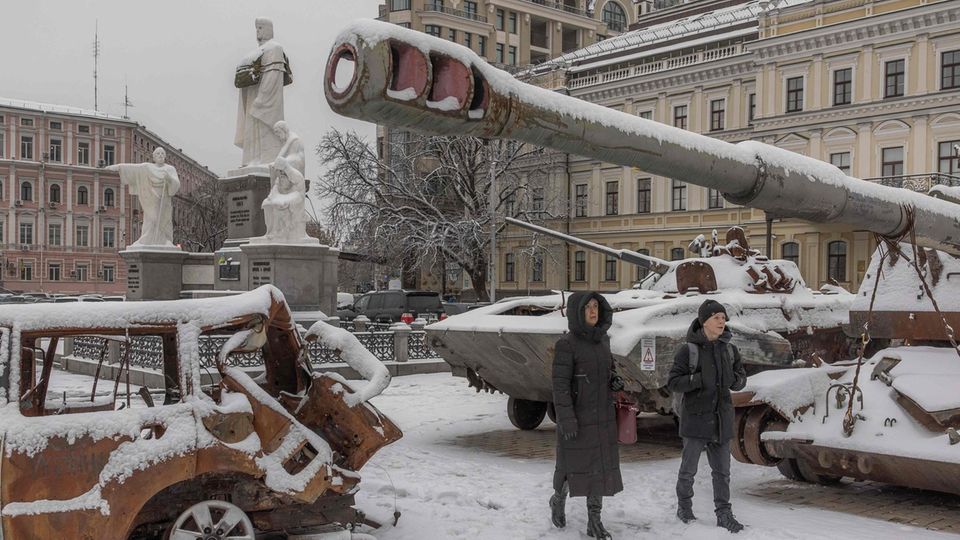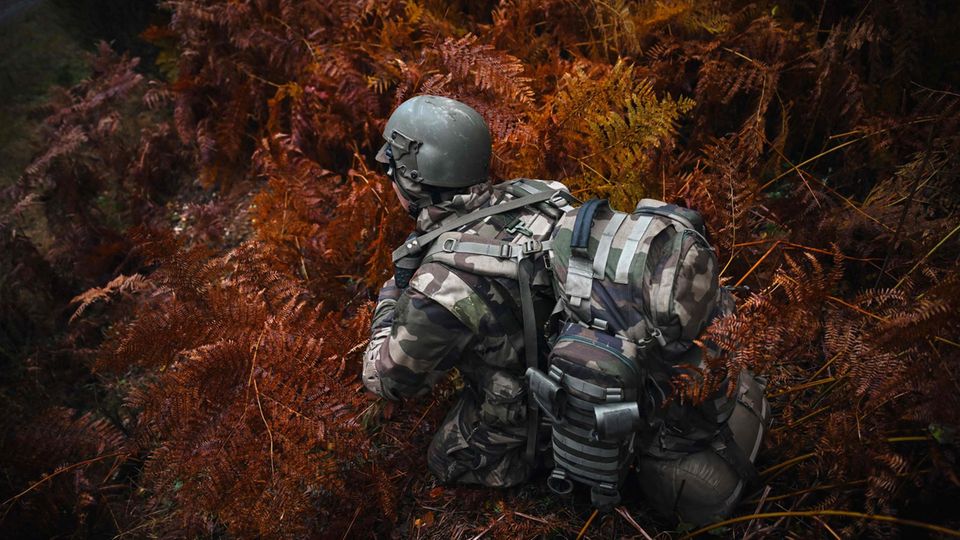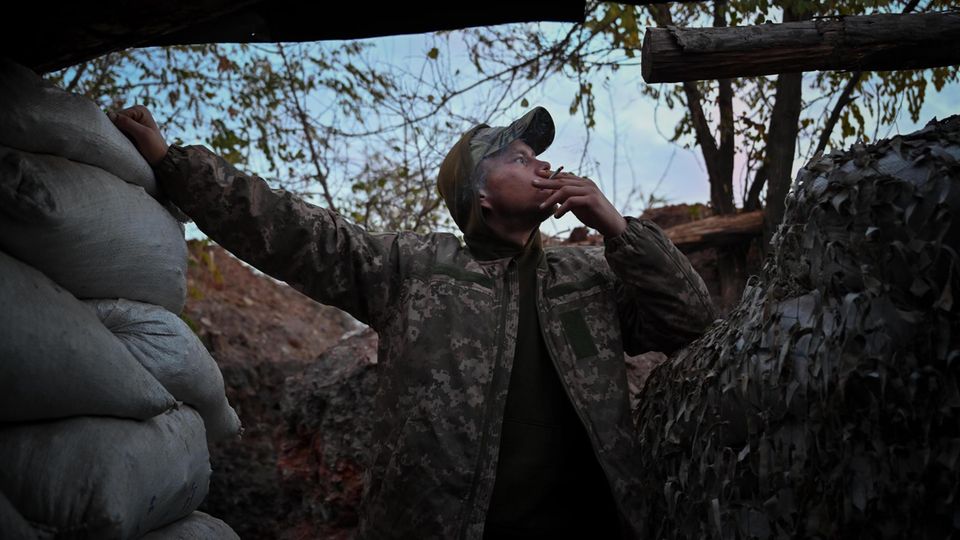War in Ukraine
Why “a stalemate” is just a nice way of saying “Putin wins.”
Meanwhile, Ukraine is suffering from a shortage of artillery shells.
© Anatolii Stepanov / AFP
Neither Kiev nor Moscow is making progress on the front. But that doesn’t mean that a “draw” will be achieved. The crucial question now is: Who can endure the battle of attrition longer?
The world is looking at the Gaza Strip, but at the same time the war is raging there Ukraine continues unabated. In the West, the overly optimistic forecasts about the success of the Ukrainian summer offensive have given way to a more contemplative tone. Hardly anyone believes that Kiev will achieve great success this winter. There is now talk of a “draw” or a “stalemate” at the front. Given the movements at the front, “stalemate” sounds plausible. Neither side can make major gains or force a real breakthrough into the opposing front. With all their might, the Ukrainians were able to push the Russians back a few kilometers in some places, and the Russians have been able to advance again for a few weeks. But only on a very manageable scale.
However, the near standstill at the front does not mean that the situation is static. Static would mean that it can last a long time unchanged, that there is a stable equilibrium at the front. Since the summer there has been bitter fighting in many parts of the 1,000 kilometer long front. Even without advance, it’s a slaughter. Material and people are constantly being devoured. The focal points of the Fights shift, the names of the contested villages change. But basically it’s one gigantic battle of attrition. Such battles in the First World War were called blood mills or meat grinders.
Collapse even without movement
This is not a good development. The summer offensive was hyped because all experts agreed that Kiev’s troops were superior to Putin’s soldiers in mobile combat – because they had better morale, better equipment and better operational doctrine. The static battle, on the other hand, plays into Putin’s hands because the deficiencies in troop leadership and training are less important, but the greater Russian firepower has an impact.
The essence of the battle of attrition is not to gain ground, even if propaganda longs for it. It is a fight that constantly weakens and bleeds the opponent. The calculation behind this is that your own side can endure the inevitable losses for longer than your opponent. At some point he collapses from weakness, even if there were no major withdrawals beforehand. The German defeat in the West at the end of First World War is the prime example of such a weakness-collapse of the front.
There can only be talk of a stalemate in Ukraine if the wear and tear of the war occurs so evenly that neither side gains an advantage. This is not impossible, but the small shifts in the front cannot be used as evidence.
Ukraine or Russia: Who can endure the horror longer?
At the moment the signs are not good Kyiv can endure this form of war for a long time. Soldiers are the most important resource in war. Russia has around 140 million inhabitants, Ukraine around 44 million. In principle at least, because part of the population lives under Russian control, while others have left the country because of the Russian war of aggression. There are around 650,000 registered male Ukrainians of military age in the EU countries and thus de facto avoid compulsory military service. Russia currently has a population four times larger and a correspondingly high recruitment potential. Even assuming higher Russian losses, the imbalance remains.
When it comes to war material, the hope that the Russian military industry will collapse because of Western sanctions has not been fulfilled. In fact, new production and the processing of older war material were massively increased. The question arises: Can Ukraine supply war material on the scale that Putin is producing? In other words: Are Western deliveries keeping up with Russian production? Do we send more tanks to Ukraine or does Putin do it?
Western artillery failure
Particularly when it comes to the production of new weapons, there is no evidence that the West has entered into a form of partial war economy. The best example is the promised delivery of one million artillery shells to Kiev from the EU. The target is missed by a long way Russia has received a million grenades from North Korea within a few weeks and more may follow. It is also of little use if individual high-tech systems such as Iris-T are promised, but there is already a worrying lack of standards such as simple mortar grenades (82 and 120 mm) at the front.
At the same time, the Russians are constantly degrading Ukraine’s economy and infrastructure through drone strikes and glide bombs. Kiev also regularly manages to hit individual halls, refineries and bases in Russia. Something like this hinders the Russians, but their work of destruction in Ukraine is of a much greater dimension. Simply put: every month that the war continues, less of Ukraine’s substance remains.
War is becoming more and more expensive
If the war continues, Russia may continue to increase its war effort for years to come. It is not foreseeable that the West will be able to cut off Russia’s revenues and supplies from the rest of the world and that Putin’s war economy will collapse. Ukraine’s own economic performance will continue to decline due to continued destruction, raising the question of whether its allies can or even want to counter Russia’s efforts.
To do this, Kiev would have to receive more money or arms deliveries from year to year. In addition to the increase in Russian production, the sharp price increases from Western suppliers must be offset. Artillery ammunition is said to have risen in price by around a third since the beginning of the war. Instead of 100 million, over 130 million would have to be transferred today for the same amount of grenades. The situation is getting worse because the US will reduce its support and expect the Europeans to fill the gap.
Even if this negative list does not have to be true in every point, it makes clear how risky it is if Kiev decides on a stalemate. If you compare the war to a boxing match, rounds with draws are of no use to Kiev because Russia can endure more rounds. For a true stalemate, Ukraine would have to survive the winter as well or as badly as the invaders. However, if the Ukrainians suffer more, stalemate is just a nice word for “Putin wins.” If the Russians also succeed at the front, push the Ukrainians back or capture one or two cities, there can be no question of a stalemate. In this case, the stalemate scenario would become a complete illusion.





